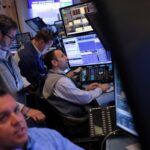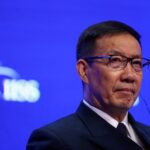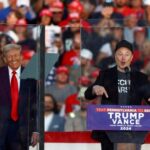By Neil Jerome Morales and Enrico Dela Cruz
MANILA (Reuters) -The Philippine central bank left its benchmark interest rate steady at 6.25% for a third straight meeting on Thursday, saying it needed to balance the need to support economic growth while keeping inflation in check.
While inflation risks were tilted to the upside, Bangko Sentral ng Pilipinas (BSP) Governor Eli Remolona said the central bank “recognised the challenging outlook for economic growth.”
The BSP’s decision to extend its policy pause followed data last week showing the economy grew at its slowest annual pace in nearly 12 years in the second quarter, due to a contraction in government spending and weaker domestic demand.
All but one of the 20 economists in a Aug. 7-14 poll by Reuters had expected the central bank to leave its overnight borrowing rate unchanged. One predicted a 25 basis point rate hike.
The peso, which hit its weakest level since November on Monday amid concerns about China’s faltering economic growth and more rate hikes from the U.S. Federal Reserve, weakened 0.2% to 56.75 to the dollar after the central bank’s decision.
BSP Deputy Governor Francisco Dakila said the central bank has always let the market determine the exchange rate but it has the “option to intervene” when needed.
Inflation for this year and next was seen averaging 5.6% and 3.3%, respectively, the central bank said, higher than its earlier projections of 5.4% and 2.9% due to the impact of higher global oil prices.
Remolona, who chaired his first policy meeting as governor on Thursday, said the central bank was “ready to resume tightening when necessary.”
“The rates are not that elevated. They are still low enough to not be a factor in growth,” he said.
Prices have cooled for a sixth straight month in July, but the 4.7% inflation rate remained outside the central bank’s 2% to 4% comfort range.
ING economist Nicholas Mapa said in a note he expected the BSP to leave rates unchanged for the rest of the year, but it could consider a hike should the Fed opt to increase policy rates before the end of 2023.
(Reporting by Neil Jerome Morales and Enrico dela Cruz; Writing by Karen Lema; Editing by Martin Petty, Raju Gopalakrishnan and Kim Coghill)






